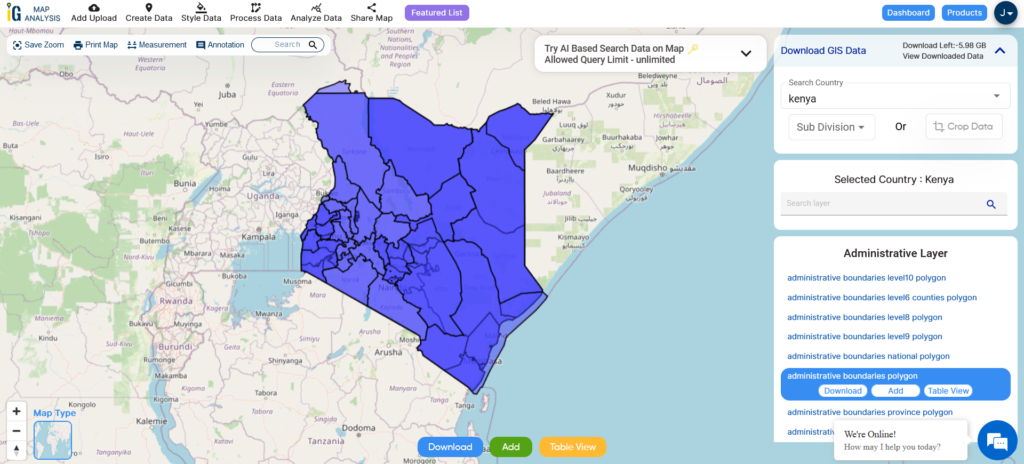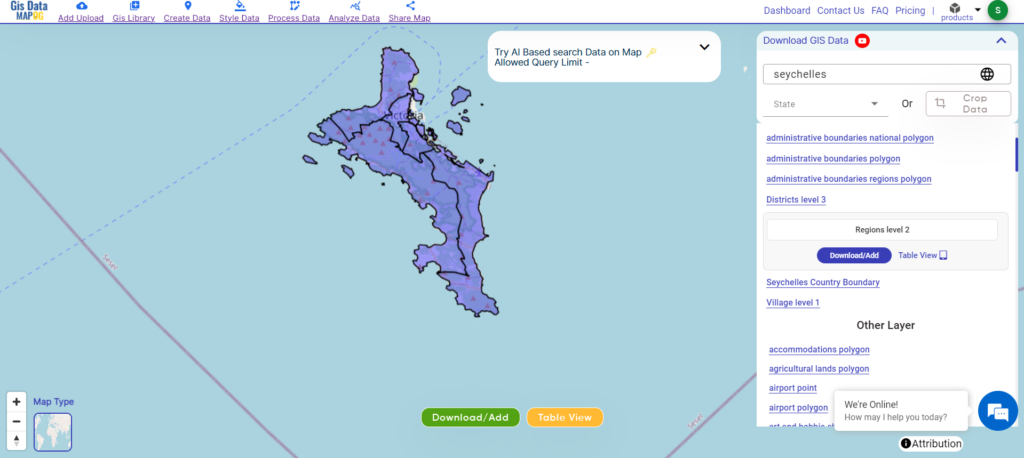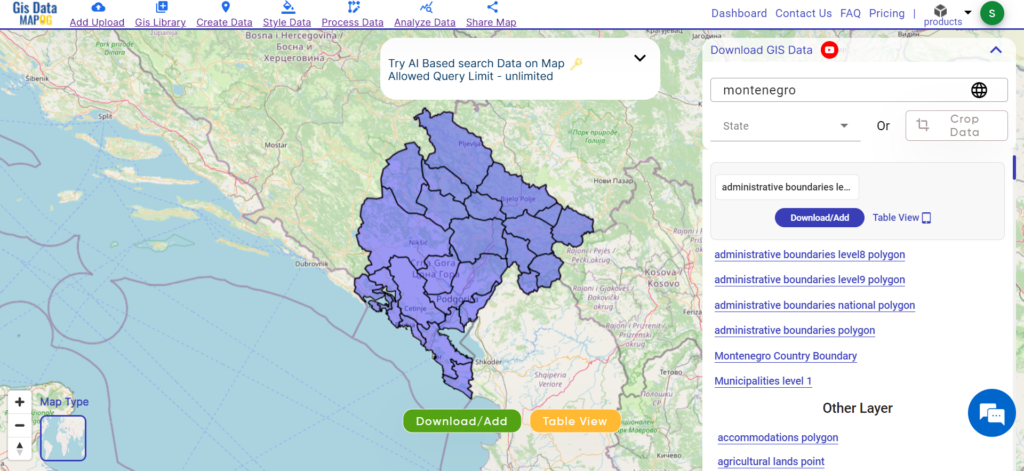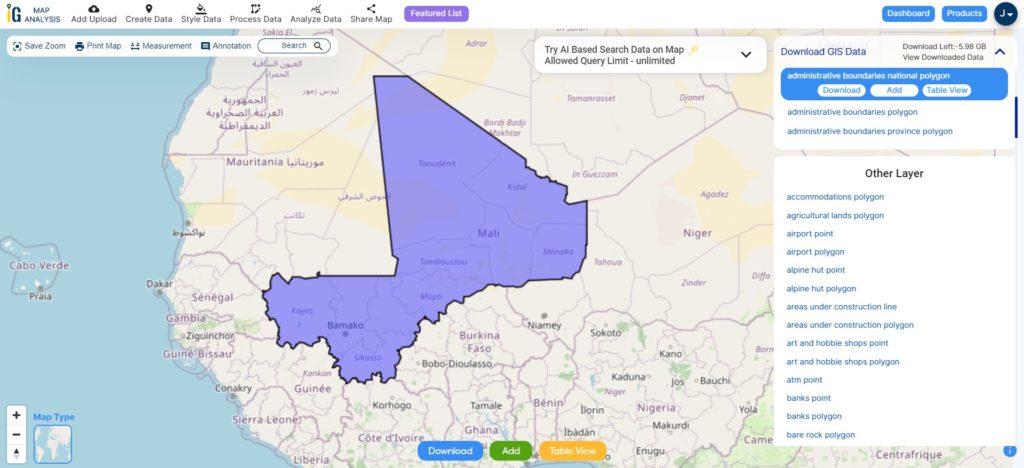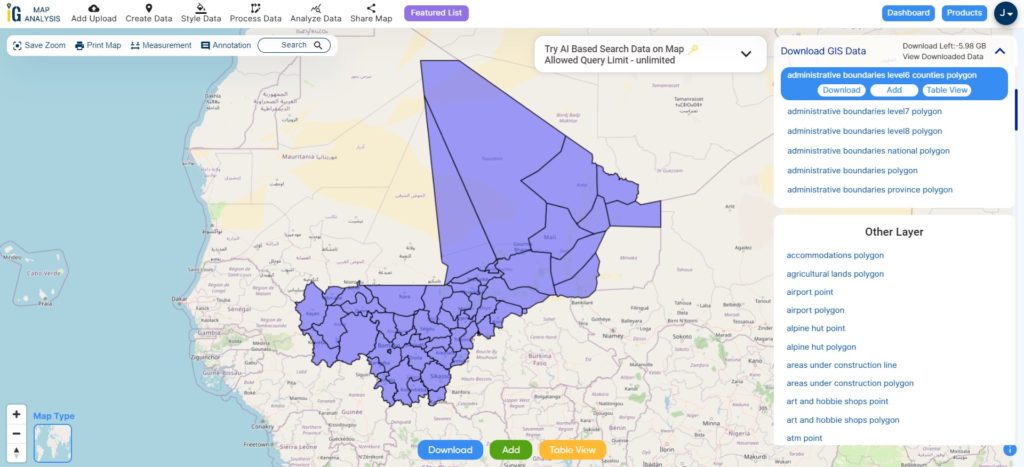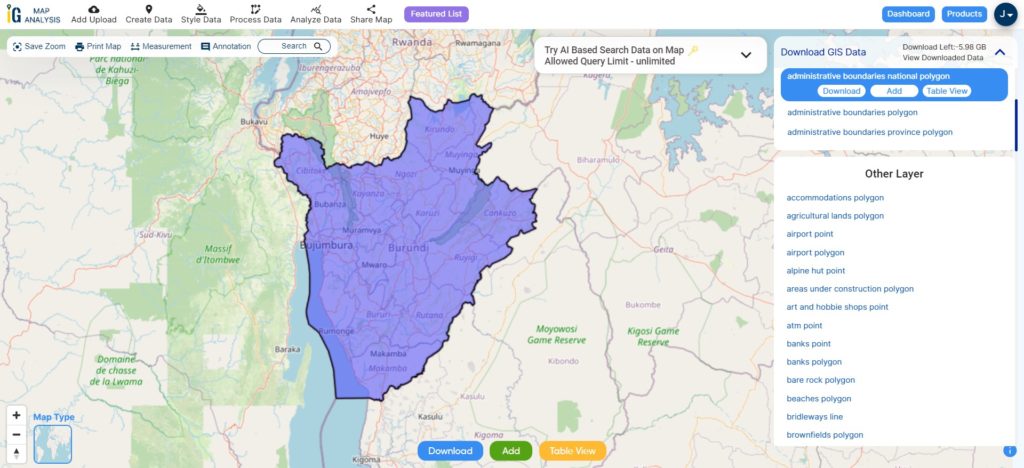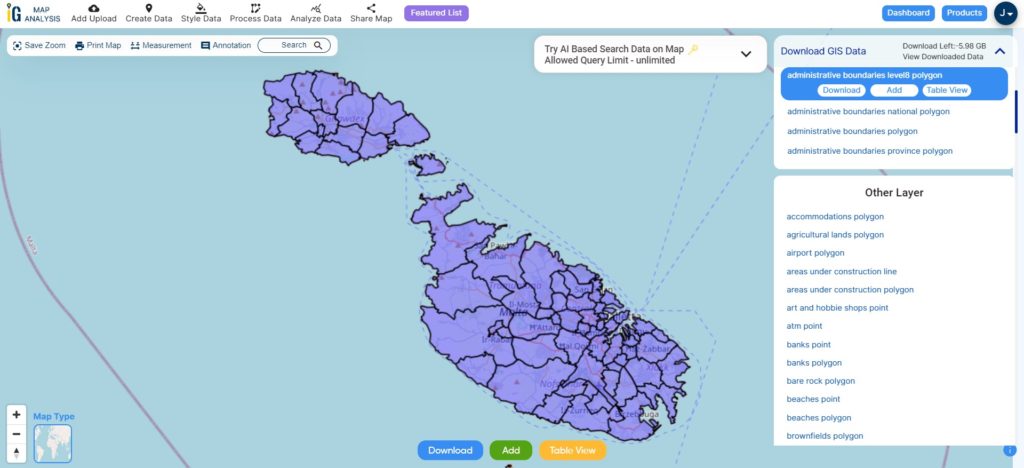Explore Kyrgyzstan’s geography seamlessly with MAPOG. Access a diverse range of datasets, including boundaries, rivers, vegetation, and airports. Take advantage of user-friendly tools like Download GIS Data, providing formats such as Shapefile, KML, GeoJSON, and CSV. Delve into Kyrgyzstan GIS Data confidently with MAPOG
With MAPOG’s versatile toolkit, you can effortlessly upload vector, add WMS (Web Map Service) layers, upload Excel or CSV data, incorporate existing files, perform polygon splitting and merging, generate new polygon and polyline data, use the converter for various formats, conduct buffer analysis, create grids, transform points into polygons, calculate isochrones, and utilize the geocoder for precise location information.
We offer an extensive array of data formats, including KML, SHP, CSV, GeoJSON, Tab, SQL, Tiff, GML, KMZ, GPKZ, SQLITE, Dxf, MIF, TOPOJSON, XLSX, GPX, ODS, MID, and GPS, ensuring compatibility and accessibility for various applications and analyses.
Note:
- All data available are in GCS datum EPSG:4326 WGS84 CRS (Coordinate Reference System).
- You need to login for downloading the shapefile.
Download Shapefile Data of Kyrgyzstan
Kyrgyzstan, a landlocked country in Central Asia, spans approximately 199,951 square kilometers. It is renowned for its mountainous terrain, dominated by the Tien Shan range. The country’s capital is Bishkek, situated in the northern part of Kyrgyzstan near the Kazakhstan border. This region features a blend of lush valleys and stark mountain landscapes.

Download Kyrgyzstan National Boundary Shapefile
After successfully logging in with a legitimate email address, select the country you want to work with. Next, choose the specific layer you need and click on the download option. Once that’s done, pick the desired format to acquire the essential GIS data. Before proceeding with the data download, make sure to review the data table for any relevant information.
Download Kyrgyzstan Regions Shapefile Data
Kyrgyzstan is divided into 7 administrative regions, here are the 4 regions of Kyrgyzstan:
here is a list of the 7 regions of Kyrgyzstan:
- Batken Region
- Osh Region
- Talas Region
- Jalal-Abad Region
- Issyk-Kul Region
- Chuy Region
- Naryn Region

Download Kyrgyzstan Regions Boundaries Shapefile
Download Kyrgyzstan District Shapefile Data
Districts in Kyrgyzstan are administrative units, aiding local governance and services. They facilitate direct interaction between the government and communities, contributing to efficient development efforts. Please verify for recent changes.

Download Kyrgyzstan District Boundaries Shapefile
Other GIS Data:
- Download Kyrgyzstan Airport Polygon Shapefile
- Download Kyrgyzstan vegetation Polygon Shapefile
- Download Kyrgyzstan Road Lines Shapefile
- Download Kyrgyzstan Rivers Shape file
Above all links are provided for GIS data of Kyrgyzstan if you are looking for any specific data, please write us on support@mapog.com
Download Shapefile for the following:
- World Countries Shapefile
- Australia
- Argentina
- Austria
- Belgium
- Brazil
- Canada
- Denmark
- Fiji
- Finland
- Germany
- Greece
- India
- Indonesia
- Ireland
- Italy
- Japan
- Kenya
- Lebanon
- Madagascar
- Malaysia
- Mexico
- Mongolia
- Netherlands
- New Zealand
- Nigeria
- Papua New Guinea
- Philippines
- Poland
- Russia
- Singapore
- South Africa
- South Korea
- Spain
- Switzerland
- Tunisia
- United Kingdom Shapefile
- United States of America
- Vietnam
- Croatia
- Chile
- Norway
- Maldives
- Bhutan
- Colombia
- Libya
- Comoros
- Hungary
- Laos
- Estonia
- Iraq
- Portugal
- Azerbaijan
- Macedonia
- Romania
- Peru
- Marshall Islands
- Slovenia
- Nauru
- Guatemala
- El Salvador
- Afghanistan
- Cyprus
- Syria
- Slovakia
- Luxembourg
- Jordan
- Armenia
- Haiti And Dominican Republic
- Kiribati
Disclaimer: If you find any shapefile data of country provided is incorrect do contact us or comment below, so that we will correct the same in our system as well we will try to correct the same in OpenStreetMap.


